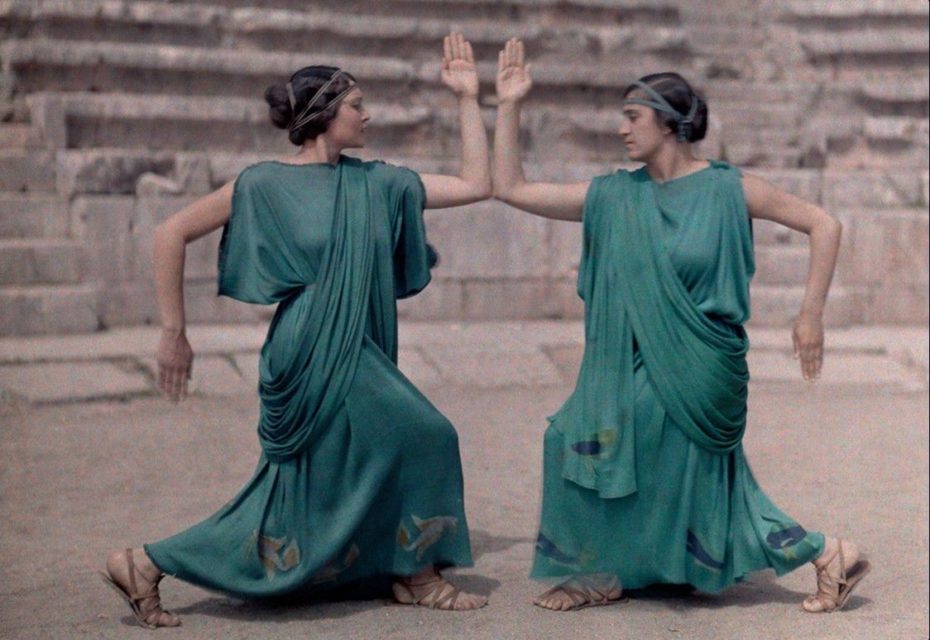
Every summer we run into the same problem: too many amazing festivals, too little time. Then we caught wind of the long lost Delphic Festivals, which makes every concert we’ve ever been to pale in comparison to its over-the-top, 1920s interpretation of Greek merrymaking. Think Coachella, but on steroids…
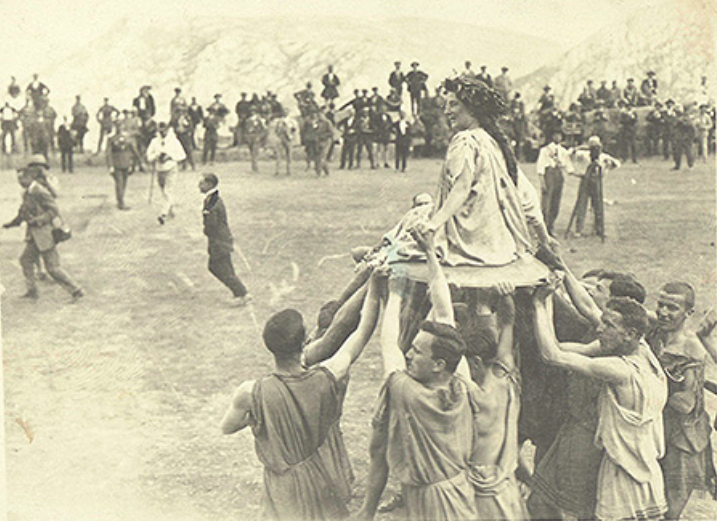

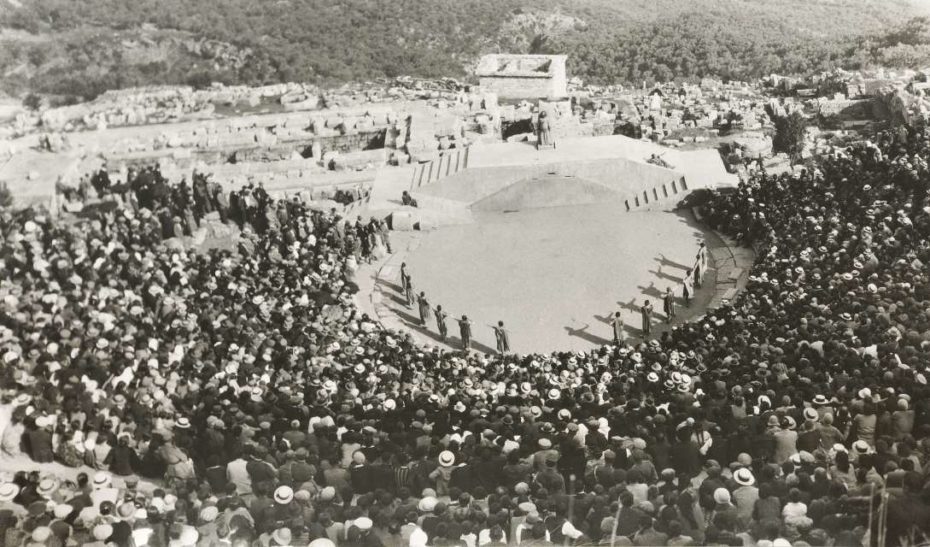
The Delphic festival was so lavish that in fact only two of them ever happened, with the first being in 1927 and the last in 1930. For two days, attendees dressed up like gods, feasted, sang Byzantine songs and hymns to Apollo while making crafts, feasted (again), and closed out the festival with a massive torch bearing. Not to mention, the tons upon tons of sweet berry wine that must’ve been flowing from their mountaintop…
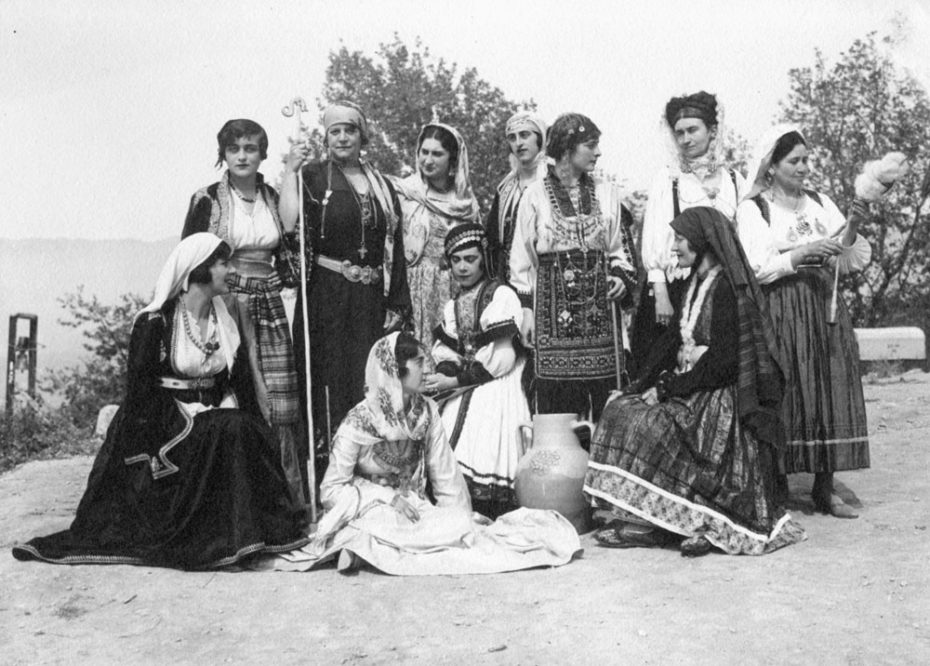
The festival drew folks far and wide who were keen to recreate classical fashions and take mini-courses in ancient folk art techniques, like weaving, or to perform in the tragic play, Prometheus Bound.
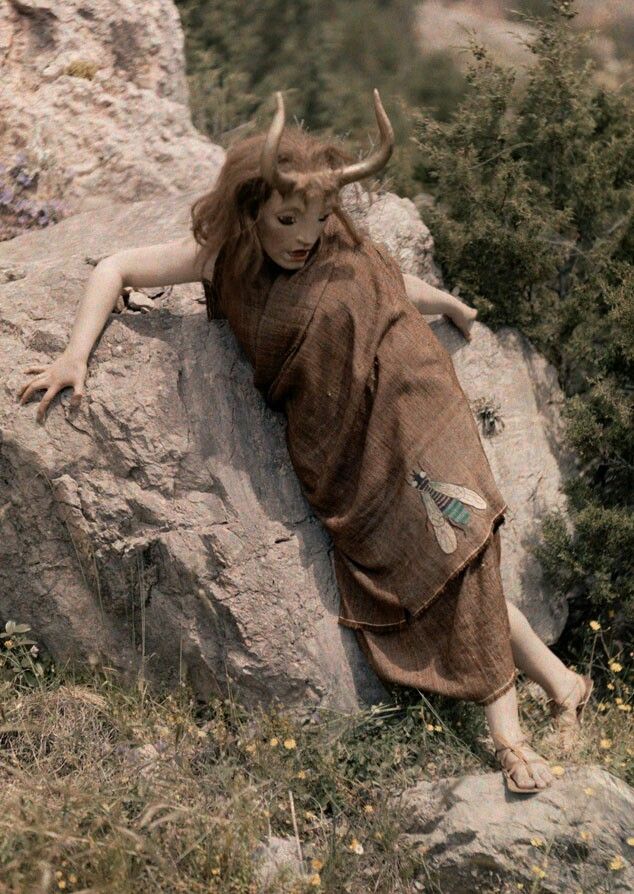
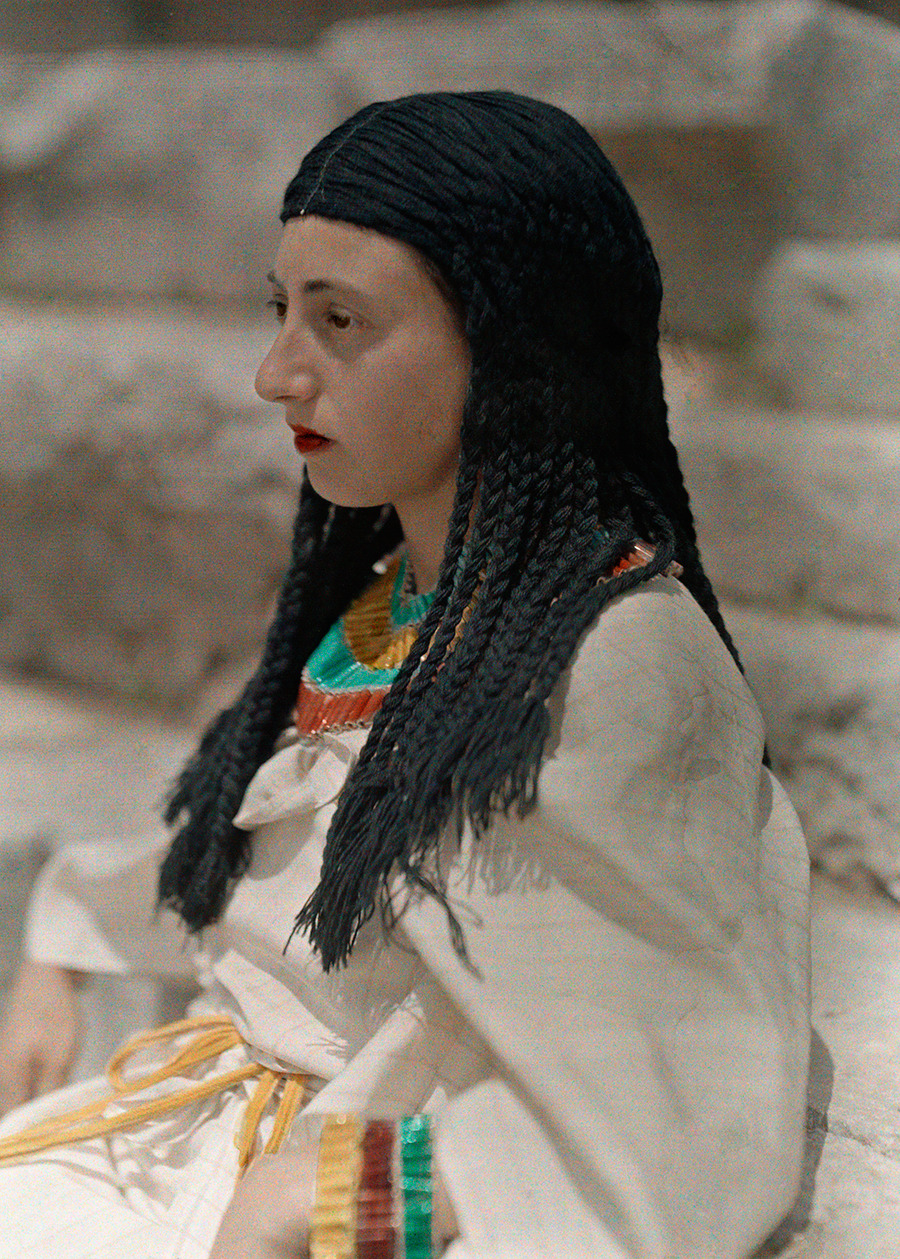
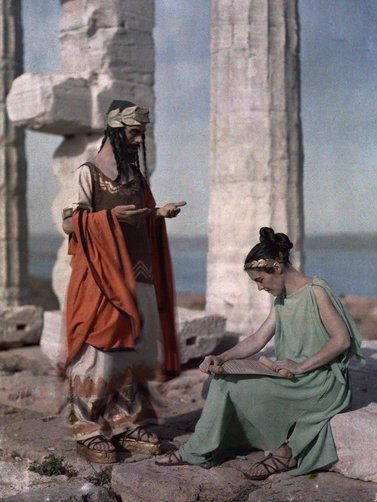
The goal, it seemed, was to become the spitting image of the best Greek life had to offer — and some took it very seriously:
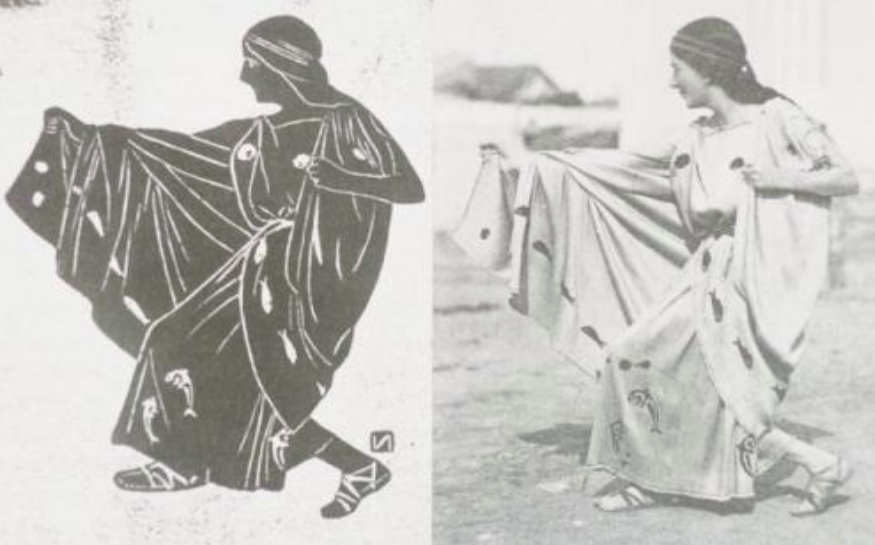
Eva imitates her idols.
The folks behind the whole operation were lovebirds Angelos and Eva Sikelianos. You may recall Eva from our piece on her former lover, Natalie Clifford Barney. She was a New Yorker, by birth, but an ancient Greek goddess at heart, and her husband was a kind, handsome Nobel Prize-nominated poet and expert of Greek texts.
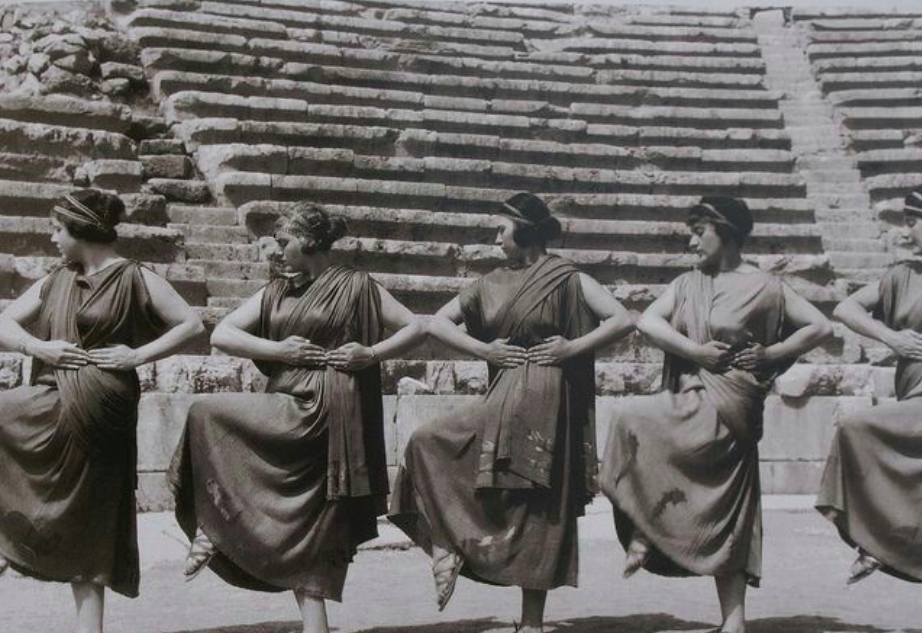
Eva’s relationship with Barney really nurtured her love antiquity; they’d even made a pilgrimage to the isle of Lesbos to study the poetry of Sappho. Their love didn’t last — but Eva’s obsession with Greece did.
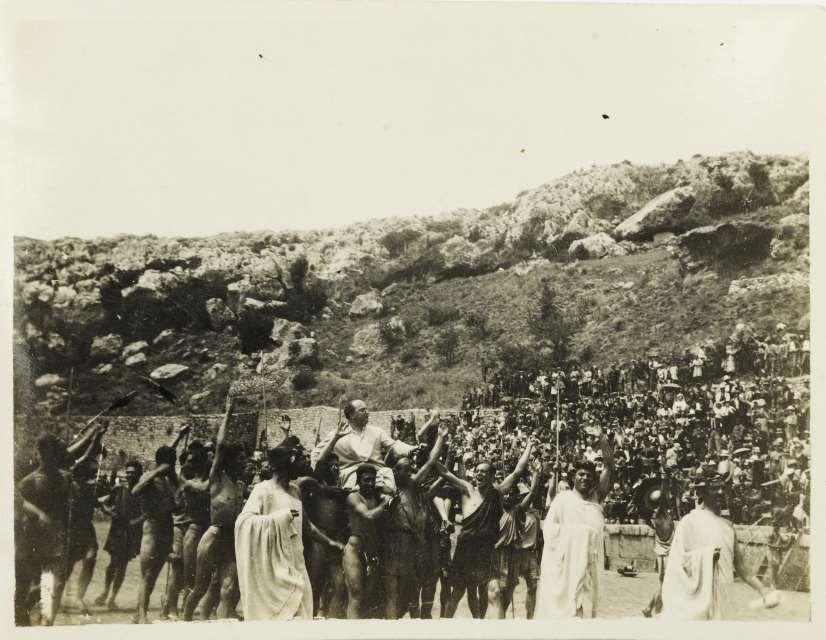
Eva and Angelos’ procession into the festival.
“With the help of friends…I had had thirty suits of armour hammered out by hand,” she said, “breast-plates, helmets, short swords and spears, copied from ancient models in the National Museum. They were gorgeous, and I was looking forward to seeing men dance with heavy armour which would force them into movements; there could be no graceful leaps, or pirouettes.”
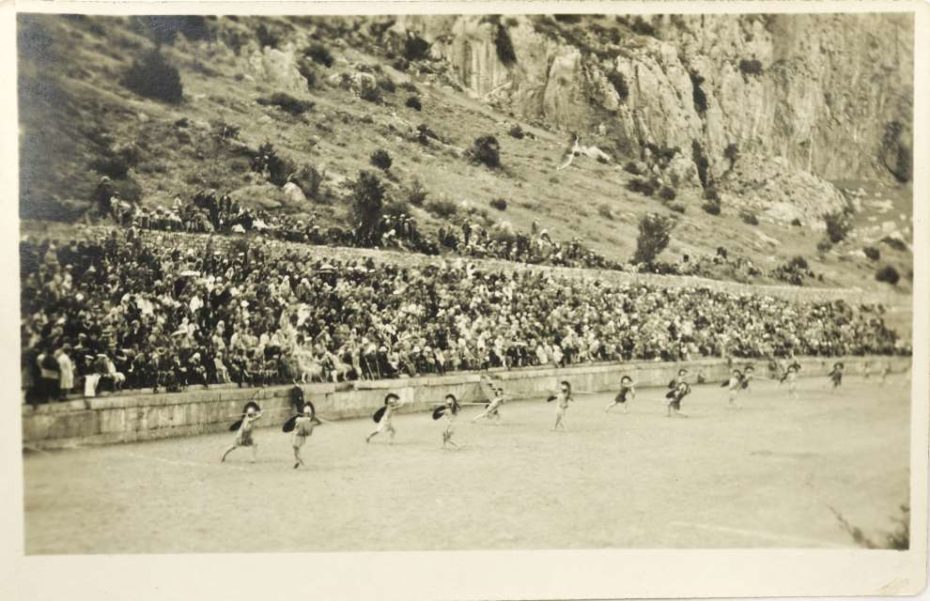
The event was co-funded by the state, perhaps because it was such a proud testament to Greek history, and even included athletic matches. “They included the ancient sports of the stadium (running), the diavlos, the hoplite run, discus, javelin and long jump with dumbbells,” say the festival’s archivists.
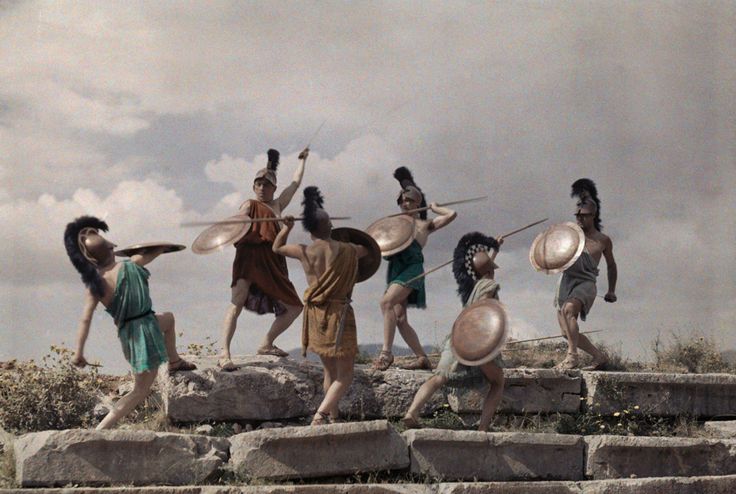
Reenacting a Macedonian battle.
It’d also be hard to top Delphi as a location. This is the place where, for 12 centuries, a woman proclaimed to be the “Oracle of Delphi.” Her job? Speaking truths (in tongues, no less) that sent shivers down her people’s spine about love, war, and philosophy.
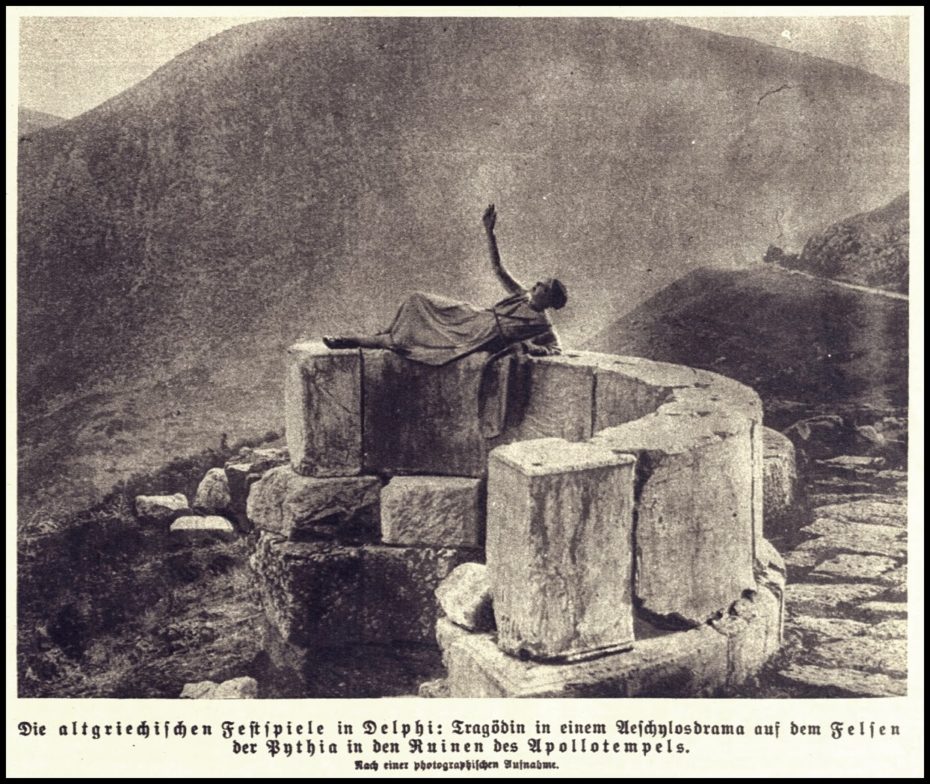
Today, historians have identified Delphi as a site of major, natural petrochemical fumes, which might explain why the Oracle spoke of prophecies in tongues while seriously tripping out — but, regardless, it’s become one of the world’s most sacred and mystical sites for academic weirdness.

The Delphic Festival of 1930
Sadly, exorbitant costs and waning attendance meant the state couldn’t keep shelling out for it. But today, some of the archives are visible at Eva and Angelo’s estate, which has become the Museum of Delphic Festivals:
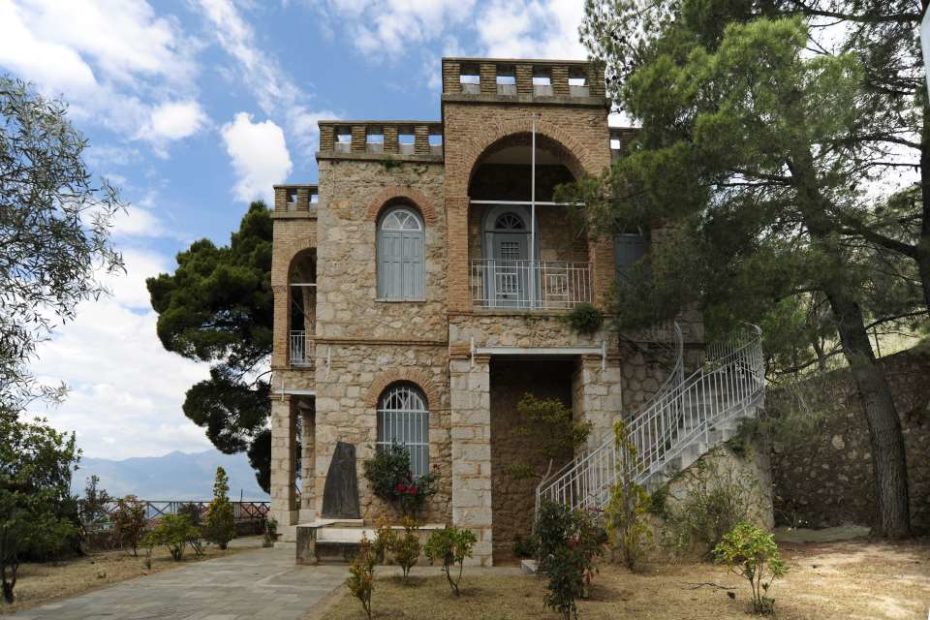
© The Delphic Museum.